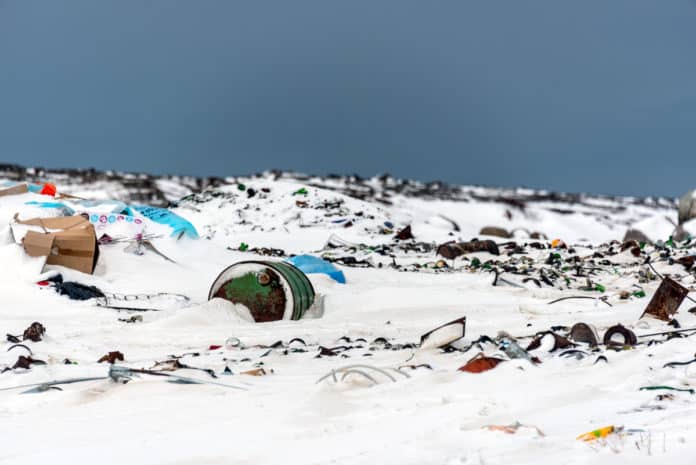Plastic Found In Arctic signals to their ubiquity in the environment, and we are breathing them! The study reveals that Arctic surface waters have the highest microplastics concentrations of all the world’s oceans.
Researchers from Germany’s Alfred Wegener Institute for Polar as well as from the Marine Research and the Swiss Institute for Snow and Avalanche Research have found a substantial amount of plastic fragments and fibers atop ice floes in the Fram Strait which is an unpopulated expanse of ocean between Greenland and the Norwegian Arctic archipelago of Svalbard. This study shows that Microplastic has invaded various parts of our Planet, including the most remote reaches of the Arctic.
Researchers have been trying to find out how Microplastics makes its way to such distant locations far from the urban centers where it’s usually generated. Samples from various remote areas of the Arctic Region were collected between 2015-17 reveling high levels of Microplastics. This study raises concerns about how much microplastics contaminate the Atmosphere, posing a potential health risk to people and animals.
Melanie Bergmann, a senior marine ecologist with the Alfred Wegener Institute, says that the significant exposure pathway may be the air that we breathe. Bergmann and her
team had been studying plastics on the Arctic seafloor since 2002. They noticed a massive increase in Plastics found in the Arctic in the past decade, including a tenfold increase in some stations. This shows that though the Arctic is situated in a remote location, the world’s pollution eventually makes its way there.While looking for Microplastics, the scientists found them in abundant quantity in the Arctic water column. Around 6,000 particles were found in every 2.2 pounds of mud near the deep-sea sediments. Sea ice was found to have an enormous quantity of Microplastic- 12,000 particles per 34 ounces of melted ice! The Study reveals that Arctic surface waters had the highest microplastics concentrations of all the world’s oceans.
Plastic Found In Arctic- How do Plastics Travel to the Arctic?
Melanie Bergmann says that the primary source is the Gulf Stream and Strong Atlantic Currents, which starts from Northern Europe.
Another question of concern to the scientists was whether the Atmosphere contributes to Microplastic transportation.
A recent study shows that the Atmosphere contributed to the transport of Microplastics in the remote Mountain of Pyrenees. Bergmann and her team surveyed to find the answer. Snow samples from ice floes in the Fram Strait had surprisingly high concentrations of microplastics. The average across all samples was 1,800 particles. To be super sure the researchers co-related the data with snow near urban sites in Germany and the Alps. An average of 24,600 particles per 34 ounces was found showing a considerably high amount of Microplastic.
Scientists concluded that Microplastic found in the Arctic region was substantial and the data reveals a significant atmospheric role of Microplastic transportation across the globe!
Bergmann says that Microplastics are everywhere and aerial transportation is the pathway to transport Microplastic to the remotest parts of our Planet. This means that the Atmosphere is the principal source of exposure of Microplastics to humans and animals and some concentration of it may even make it to our lungs.
Jennifer Provencher, head of the wildlife health unit for the Canadian Wildlife Service says that the new study reveals the reality of Microplastic traveling across the world. She says that Microplastics in Snow was more deadly when compared to animals inhaling it. More damage is caused when these snow melts and enters the aquatic environment. Jennifer Provencher says that Microplastics pose a significant threat to the environment as it harms terrestrial, water as well as tropical ecosystems.
Chelsea Rochman, University of Toronto microplastics researcher, who was not a part of this study, says that she was surprised at first to learn that the particles were being transported in the Atmosphere. Rochman noted that since we are aware of Microplastic transportation through the Atmosphere, we should not be surprised by its presence in the Arctic.
As far as human health is concerned, we have insufficient study data to confirm its ill effect. Rochman says we need more Study to fully understand the impact of Microplastic on human health though scientists have found that Microplastics enter every level of the food chain in aquatic ecosystems.
Even worse maybe the threat from airborne nano plastics. They are so small they’re mostly invisible and about which almost nothing is known so far. Bergmann says that nano plastics can enter into cells posing a threat to humans.






























